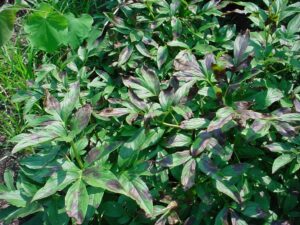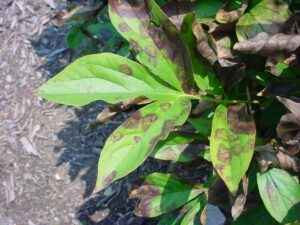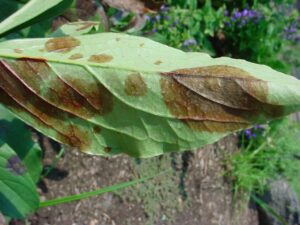Leaf blotch, also called red spot and measles, is a common disease of peony caused by the fungus Graphiopsis chlorocephala (=Cladosporium paenoiae). The disease has multiple names because there are multiple symptoms. Lesion on leaves and stems can vary from tiny red spots (“measles”) to larger brown or purple blotches (Figures 1, 2 and 3). The fungus survives the winter in infected plant debris, and produces spores in the spring which are splashed onto young foliage and stems through rainfall or overhead irrigation. Although symptoms are quite striking, and infection can be very severe, the overall impact of this disease on plant health and survival appears to be minor.
- Figure 1
- Figure 2
- Figure 3
Management:
Sanitation (removing dead plant residues in late fall or early spring before plants break dormancy) is important in reducing the severity of this disease in the landscape. Use drip irrigation rather than overhead sprinklers when watering peony plants, to avoid wetting the foliage and providing a favorable environment for disease development. Thin out crowded plantings and manage weeds to allow more air flow and faster leaf drying after rainfall. Fungicides are generally not recommended in the landscape but may be necessary in nurseries where plants may be crowded and sprinkler irrigated.


